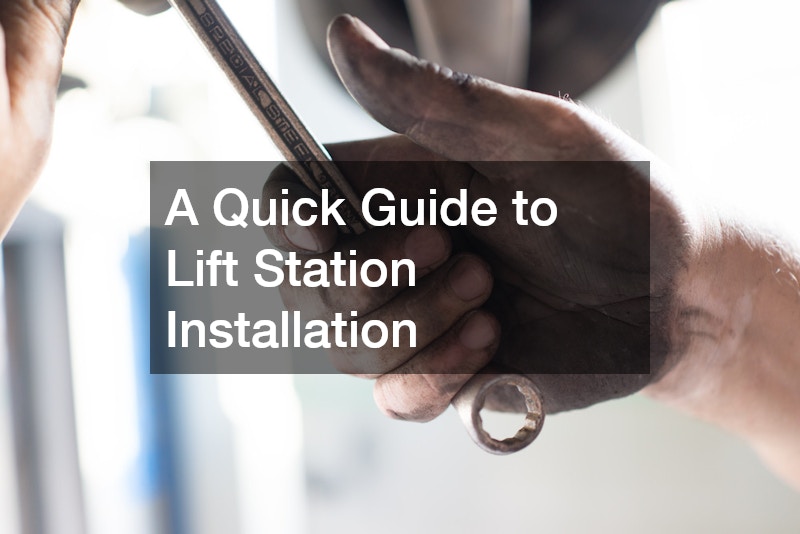
Lift stations play a crucial role in modern wastewater management systems. They are essential for transporting sewage and wastewater from lower to higher elevations, especially in areas where gravity flow is insufficient. Proper lift station installation ensures reliable operation, enhances efficiency, and minimizes unexpected breakdowns which can lead to costly repairs or environmental hazards.
This guide will provide comprehensive insights into the process of installing lift stations, specifically tailored for Ohio’s regulatory framework and environmental considerations.
What are the key components of a lift station installation in Ohio?
Pumps and Motors
Pumps and motors are the heart of any lift station, responsible for moving wastewater against gravity. Various types of pumps, including submersible and centrifugal pumps, are utilized based on specific site requirements and wastewater characteristics. In lift station installation OH, selecting the right pump ensures energy efficiency and prolonged equipment life.
Motors are pivotal as they drive the pumps, providing the necessary force to overcome friction and elevation. Ensuring motors are appropriately sized and maintained is critical for optimal lift station performance. Regular inspections and preventative maintenance aid in minimizing downtime and preventing unexpected motor failures.
The interplay between pumps and motors must be meticulously managed to handle varying flow rates and pressures. Advanced technologies, such as variable frequency drives (VFDs), are often used to optimize motor performance, reducing energy consumption and wear. Proper synchronization of these components can lead to significant cost savings over the station’s operational life.
Control Panels
Control panels serve as the command center of lift stations, overseeing the operation of pumps, motors, and other essential systems. They come equipped with various sensors and alarms to monitor station conditions and alert operators to any potential issues. The installation of robust and reliable control panels in lift station installation OH is fundamental for ensuring continuous operation.
These systems integrate with SCADA (Supervisory Control and Data Acquisition) systems, offering real-time data and analytics for proactive maintenance and decision-making. Advanced features in modern control panels allow for remote monitoring, reducing the need for on-site personnel and facilitating quick response to malfunction alerts. Efficient control panel management contributes to smoother operation and a reduction in operational costs.
Customizing control panel settings to the specific requirements of a lift station installation OH is integral for optimal performance. This includes configuring start/stop cycles, alarm levels, and data logging capabilities. By carefully setting parameters, operations can maintain efficiency even during peak flow periods or emergency scenarios.
Piping and Valves
Piping and valves form the essential transport network within a lift station, directing wastewater from its source to treatment facilities. The design and material selection of pipes must align with the volume and type of wastewater managed, and comply with regional standards. In lift station installation OH, pipes are typically made from durable materials like PVC or ductile iron to withstand corrosive environments.
Valves control the flow within the system, allowing for maintenance without shutting down the entire operation. Selecting the right types, such as check valves and gate valves, is crucial for preventing backflow and maintaining directional flow. Regular checks and timely replacements are vital to ensure these components support the broader system efficiency.
Optimal pipe layout and installation minimize resistance and promote efficient flow. This includes considering factors such as elevation changes and necessary pipe diameters that will accommodate peak flow rates. Proper installation of piping and valves ensures a stable pressure environment, maximizing system longevity and reducing repair frequency.
The successful installation of lift stations in Ohio hinges on understanding and implementing the appropriate components, adhering to regulatory requirements, and considering environmental impacts. By carefully managing pumps, motors, control panels, piping, and valves, operators can achieve optimal station efficiency and longevity. Navigating local permits and state guidelines, along with proactive environmental considerations, ensures a sustainable and compliant installation process.
Awareness of these critical factors enhances project planning and execution, reducing the risk of unforeseen challenges. For those considering implementing lift station installation OH, engaging with experienced professionals and maintaining open communication with regulatory bodies are key steps. By doing so, stakeholders can ensure the success of their project, from initial planning through to operational execution.
In conclusion, lift station installation is a complex but manageable process when approached with the right knowledge and resources. By following this guide, stakeholders can confidently address the multifaceted aspects of installation and pave the way for reliable and efficient wastewater management solutions.
.

